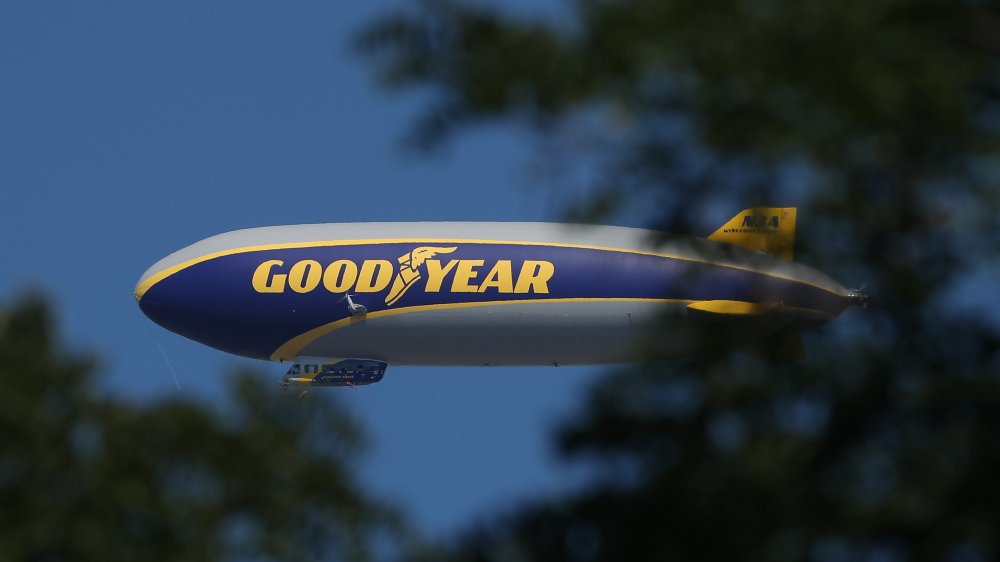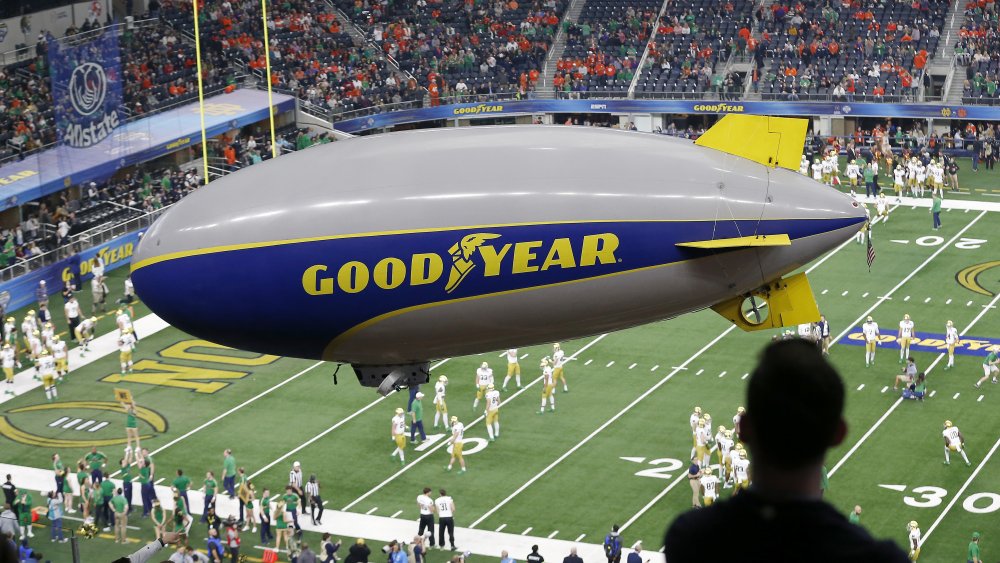The Surprising Truth Of The Goodyear Blimp
Look! Up in the sky! It's a bird! It's a plane! It's — a blimp. Are you trying to say Superman put on weight? Of course not. That would be mean. Plus, you're probably talking about spotting an airship, which could be a blimp, a zeppelin, or a dirigible.
The Airships website tells us that "dirigible" and "airship" are synonymous. A dirigible is a lighter-than-air craft that can be steered (as opposed to a balloon, which is free-floating). A dirigible could be a rigid airship, like the ill-fated Hindenburg; semi-rigid, like the Zeppelin NT (more on that in a moment); or a blimp, like that made famous by Goodyear.
A blimp (and shame on you for using that kind of slur) is essentially a gas bag (sorry about that). It has no shape of its own, as Inside Hook explains. If the gas escapes, the vehicle loses its shape and collapses. Whereas a zeppelin has a rigid or even semi-rigid frame, a blimp pretty much doesn't. And it's kind of like champagne: just as the bubbly, to be really champagne, has to come from that particular region of France, technically, a zeppelin, to be a zeppelin, has to be manufactured by the ZLT Zeppelin Luftschifftechnik of Germany.
A common site at sporting events for decades
Goodyear has been in the blimp business (among other things) since 1917, says Mental Floss. They were produced and used for aerial reconnaissance during World War II, and in 1960 were drafted for the first time to help cover a sporting event, the Orange Bowl in Miami. The company logo spread across the surface of the airships provided corporate exposure, and the craft was essentially a flying camera platform for nifty shots of football stadiums.
In 2011, Goodyear announced that it would replace its blimp fleet with Zeppelin NT craft — semi-rigid airships described as "more maneuverable," as well as larger and faster. As CNN reports, the NT stands for "new technology" — for one thing, the framework is made of carbon fiber. They fly fusing helium (it was hydrogen that destroyed the Hindenburg) and with greater length, will hold more passengers. The NTs are also faster: blimps topped out at about 53 miles per hour (under ideal conditions; usually it was closer to 35), but the new airships will be capable of hitting 70. Said pilot Matt Lussier, "Its abilities are just phenomenal."

